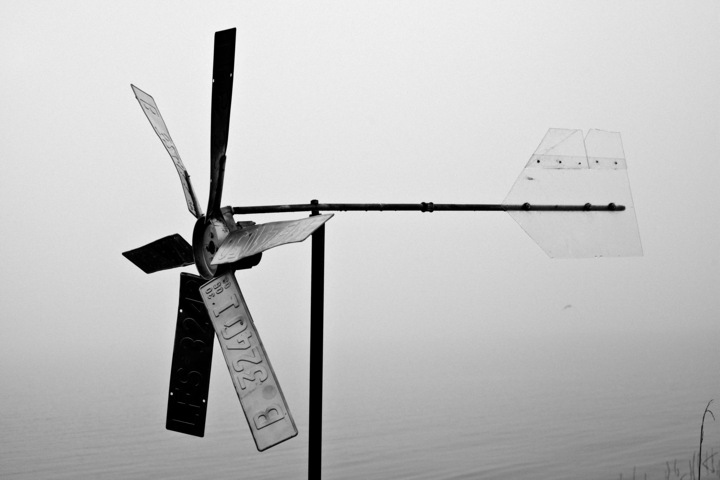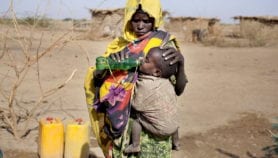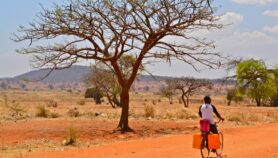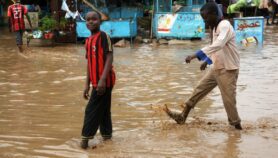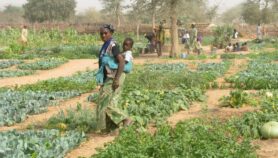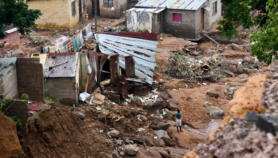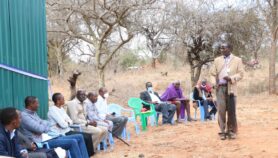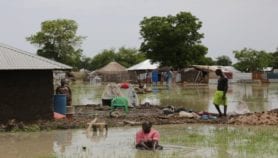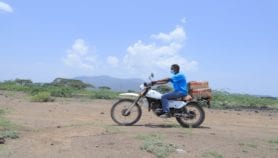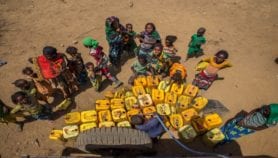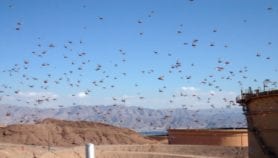By: Maina Waruru
Send to a friend
The details you provide on this page will not be used to send unsolicited email, and will not be sold to a 3rd party. See privacy policy.
[NAIROBI] More than 70 per cent of African countries have poor or obsolete infrastructure for measuring water changes in the atmosphere, and would need to modernise their weather services, says an expert with the World Meteorological Organization (WMO).
Joseph Mukabana, head of WMO Regional Office for Africa, adds that investments in national hydrological and meteorological services (NHMs) in Africa are ranked lowest in priority of national requirements despite most natural disasters on the continent being weather and climate-related.
Mukabana made these gaps known during a conference on disaster risk reduction in Antalya, Turkey, last month (10-13 February).
“Only Botswana, Egypt and South Africa can be said to have modern top-of the-range equipment that can be relied on to effectively capture the right data and help in DRR.”
Joseph Mukabana, World Meteorological Organization Africa office
According to Mukabana, 90 per cent of all natural disasters are weather- and climate-related, thus many African countries’ capacity for weather-related disaster risk reduction (DRR) has been compromised, leaving millions of people badly exposed to hazards such as floods.
The services are also poorly funded, with governments allocating little resources even as NHMs require heavy investment in forecasting equipment and systems to allow for timely and precise forecasting of floods.
Mukabana tells SciDev.Net that many African countries do not have infrastructure or equipment that could be relied on to effectively capture reliable data, capable of helping meteorologists to make the right decisions in the face of calamities. “Only Botswana, Egypt and South Africa can be said to have modern top-of the-range equipment that can be relied on to effectively capture the right data and help in DRR,” he says.
Although the continent has competent personnel to undertake hydrometeorological work, their numbers are inadequate, says Mukabana, noting that it takes time to train the required professional cadre in hydrometeorology.
Kenya, Ethiopia and Ghana are now investing in NHMs and DRR infrastructure.
“These governments are beginning to realise that although Africa is a small emitter of the greenhouse gases that have triggered global warming and the resultant climate change, it is the most vulnerable continent to the adverse impacts of this changing climate,” Mukabana notes.
Marie-Ange Baudoin, a researcher at the South Africa-based African Climate and Development Initiative, commends the Inter-Governmental Authority on Development (IGAD), which has established a regional climate prediction initiative, the IGAD Climate Prediction and Application Center (ICPAC).
“An initiative such as ICPAC is critical for member governments in building their weather and climate disaster forecasting and prediction capacity,” says Baudoin. “With the necessary technical and financial support from donors and governments, the capacity can gradually be built to levels close to those witnessed in more developed countries.”
Semunesh Golla Seyoum, a senior official with Ethiopia’s Ministry of Water, Irrigation and Energy, says African governments should invest in disaster preparedness, noting that Ethiopia is installing hydrological equipment in major rivers to perform all-year-around monitoring of water levels under a regional project supported by IGAD.
This article has been produced by SciDev.Net's Sub-Saharan Africa desk


